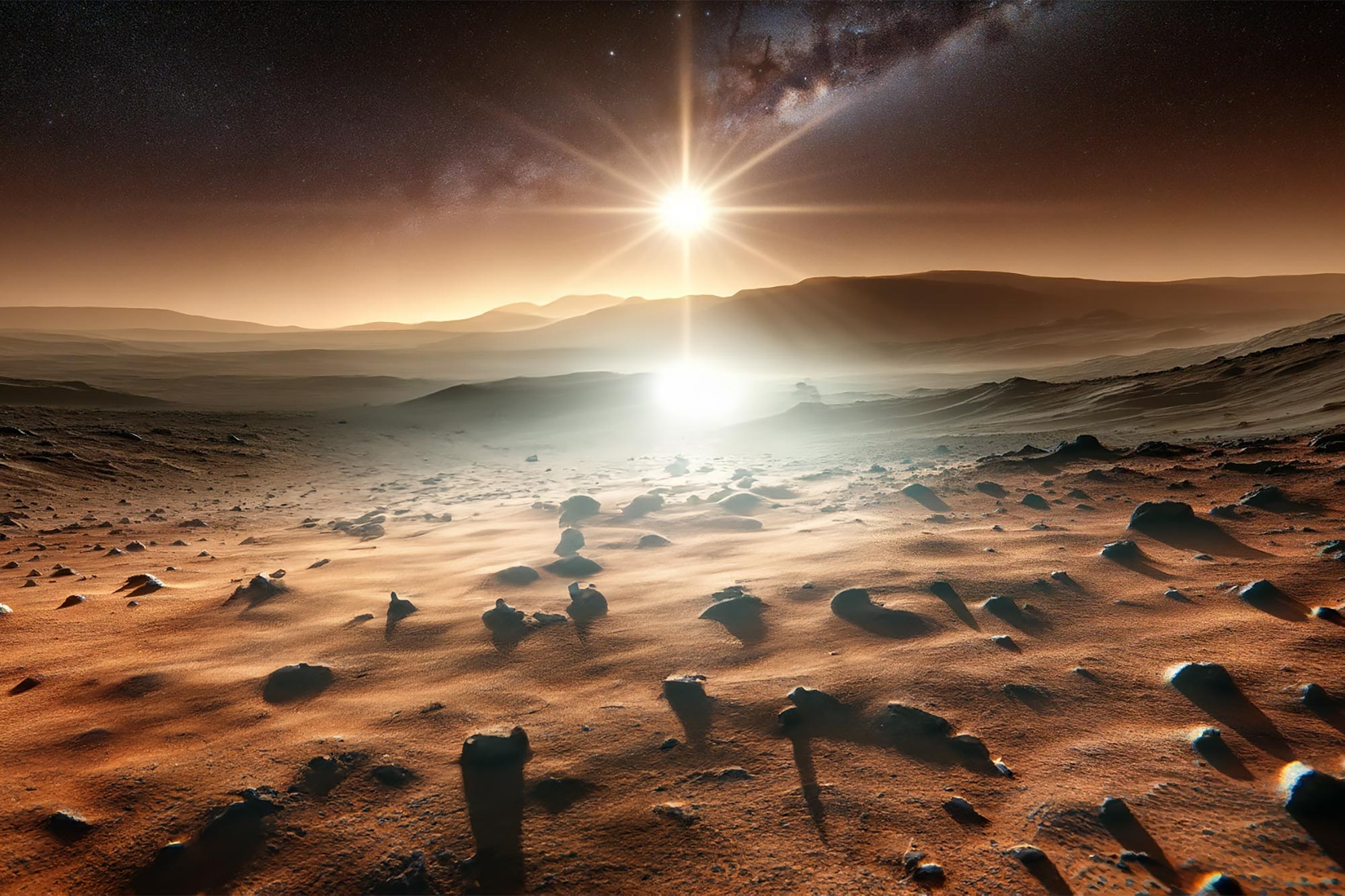NASA’s Curiosity Mars rover, when stationary, acts as a sundial, and it recently recorded two black-and-white videos on the 4,002nd Martian day (sol) of its mission. The rover used its Hazard-Avoidance Cameras (Hazcams) to capture its shadow moving across the Martian surface.
The recording of the videos was part of the last set of commands before Mars solar conjunction, a period when the Sun is between Earth and Mars, hindering radio communications. Curiosity’s Hazcams, usually used for navigation, were employed to record 12 hours of snapshots to observe any clouds or dust devils indicating Mars’ weather changes.
However, no significant weather events were observed in the images. The videos show Curiosity’s silhouette shifting from morning to afternoon to evening, capturing the passage of time from 5:30 a.m. to 5:30 p.m. local time.

The first video, taken by the front Hazcam, looks southeast along Gediz Vallis, a valley on Mount Sharp in Gale Crater, where Curiosity has been ascending since 2014. During sunrise, the rover’s robotic arm’s shadow moves to the left, and the front wheels emerge from the darkness. A circular calibration target on the robotic arm’s shoulder becomes visible, used to test the accuracy of the Alpha Particle X-ray Spectrometer, which detects chemical elements on Mars’ surface.
The second video, captured by the rear Hazcam, looks northwest down Mount Sharp’s slopes to Gale Crater’s floor. The rover’s right rear wheel and the shadow of Curiosity’s power system are visible. An artifact in the form of a small black mark in the 17th frame resulted from a cosmic ray hitting the camera sensor. Towards the end of the video, bright flashing and noise are observed due to heat from the spacecraft’s power system affecting the Hazcam’s image sensor.
These images have been re-projected to correct the wide-angle lenses of the Hazcams, and the speckled appearance is attributed to 11 years of Martian dust settling on the lenses. While the recordings did not reveal notable weather events, the effort to capture the rover’s shadow and the Martian landscape throughout the day contributes to the ongoing scientific exploration of the Red Planet.



